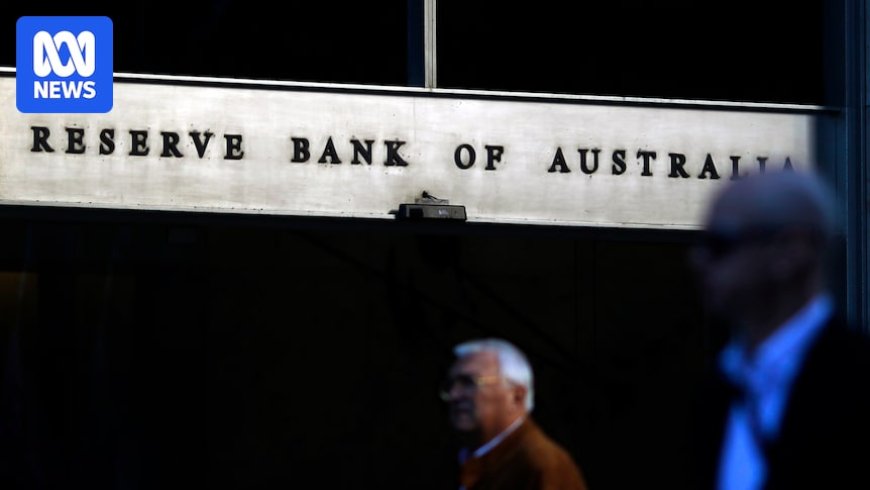Why the RBA Didn't Cut Rates and When They Will Meet Next
The Reserve Bank of Australia surprised many by keeping interest rates steady at 3.85 per cent. Find out why and when the next meeting is scheduled. The decision was influenced by the need for more inflation data, with the next key figures set to be released on July 30. The RBA board will convene again on August 11 and 12, with the possibility of a rate cut in August depending on the upcoming data.

When the board of the Reserve Bank of Australia (RBA) met yesterday, many people were expecting a cut to the cash rate target. This is the figure that influences how much interest people pay on their mortgages, so a lot of people paying off home loans were really hoping the RBA would cut it. But the board voted to keep the rate the same at 3.85 per cent. Given a rate cut had been billed as pretty much a sure thing, this news sent shock waves across the country. Now many are looking forward to what may happen at the next meeting.
When does the RBA meet next? In a month. The RBA board's next meeting will be on August 11 and 12. Will the RBA cut rates in August? ABC business editor Micheal Janda says we'll need to wait until July 30 to get a better idea of that. That's when the Australian Bureau of Statistics (ABS) is set to publish its inflation data for the June quarter. He says the figure we're watching for is 2.6 per cent: \"If the ABS figures hit that mark or lower, then an August 12 rate cut is all but certain.\" His analysis of yesterday's decision unpacks how much rates might be cut by and explains in plain English why this figure of 2.6 per cent is so important.
Why didn't we get a rate cut yesterday? The RBA is waiting for more data — especially more inflation data. It wants the inflation rate to be somewhere between 2 and 3 per cent. Inflation figures published by the ABS a fortnight ago did fit within that target — which is why so many experts were banking on a rate cut. But these were monthly figures, not the quarterly figures that take in three months at a time. And while the monthly figures are noteworthy, the quarterly data is Australia's key inflation measure. The last round of quarterly data went up to March and wasn't published until April. Back then, the RBA's preferred measure of inflation — called the \"trimmed mean\" or \"underlying inflation\" — was only just within the target threshold at 2.9 per cent. The next round of quarterly data won't come out until July 30.
RBA governor Michele Bullock said the RBA wanted to wait until after the latest quarterly data was published before cutting rates: \"...Economic conditions remain uncertain and we're waiting to confirm whether inflation is still on track to sustainably reach 2.5 per cent since the May meeting. \"The two monthly inflation indicators have been broadly consistent with our forecast for headline inflation and show that we're moving in the right direction. \"However, some components suggest that underlying inflation in the June quarter could be a little higher than our forecast.\" She went on to say: \"The board decided to wait a few weeks to confirm that we're still on track to meet our inflation and employment objectives, as well as a very thorough consideration of Australian economic conditions.\" Monthly inflation data is shown as light blue in the graph below, while the quarterly data is dark blue. The pink section is the 2 to 3 per cent range the RBA wants to keep inflation in. You can see that both are within that pink target range: The dark blue line is the inflation rate and the pink section is the range the RBA wants to keep inflation within. (Reserve Bank of Australia)
But not all board members agreed The shock decision wasn't the only big news from yesterday's meeting. This time, we got a breakdown of how the board members voted on the decision — something the RBA hadn't done before. There are nine voting members on the board. Six of those voted to keep rates the same, but three voted against it. Finance journalist Micheal West told ABC radio the \"minor transparency measure\" was a good thing. \"It just shows that there's an argument going on at the board level,\" he said. However, the RBA didn't name which directors voted for or against the decision. Ms Bullock said this was so individual board members wouldn't be lobbied to vote one way or another. \"This anonymity means that we can have this very, very good discussion and quite active discussion,\" she said.
Who is on the RBA board? There are nine people on the RBA's Monetary Policy Board: Michele Bullock — RBA governor Andrew Hauser — RBA deputy governor Marnie Baker Renée Fry‑McKibbin Ian Harper Carolyn Hewson Iain Ross Alison Watkins Jenny Wilkinson Board members are appointed the by federal government's treasurer — at the moment, that's Jim Chalmers. Non-executive board members serve terms of five years, while the governor and deputy governor's terms go for up to seven years.
What's Your Reaction?
 Like
0
Like
0
 Dislike
0
Dislike
0
 Love
0
Love
0
 Funny
0
Funny
0
 Angry
0
Angry
0
 Sad
0
Sad
0
 Wow
0
Wow
0
















































































































































































